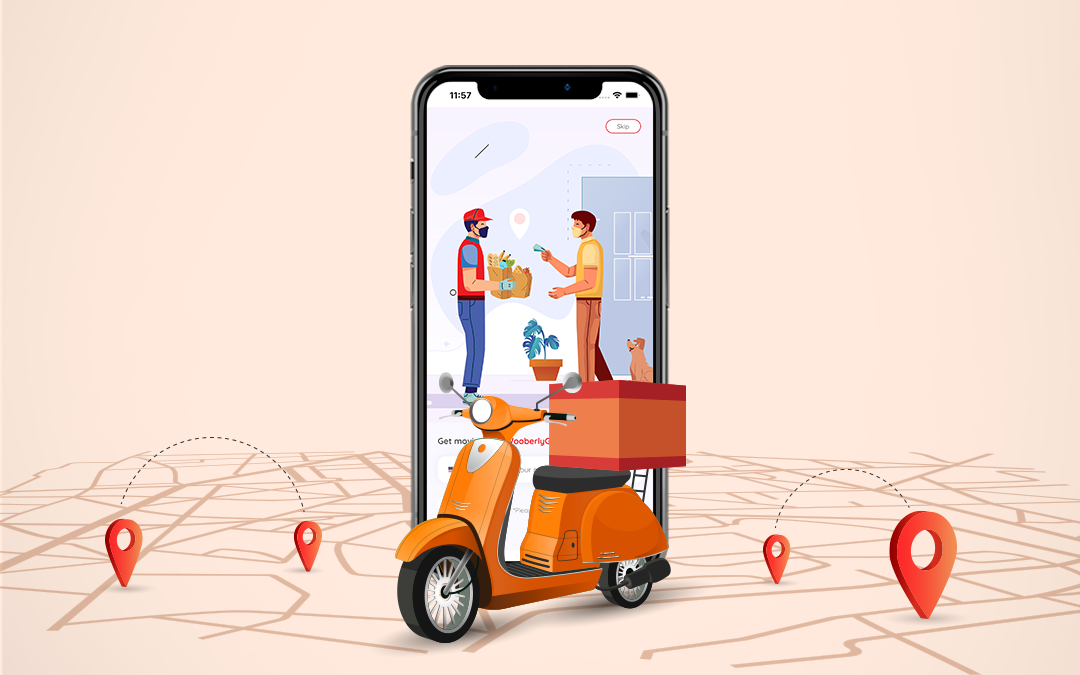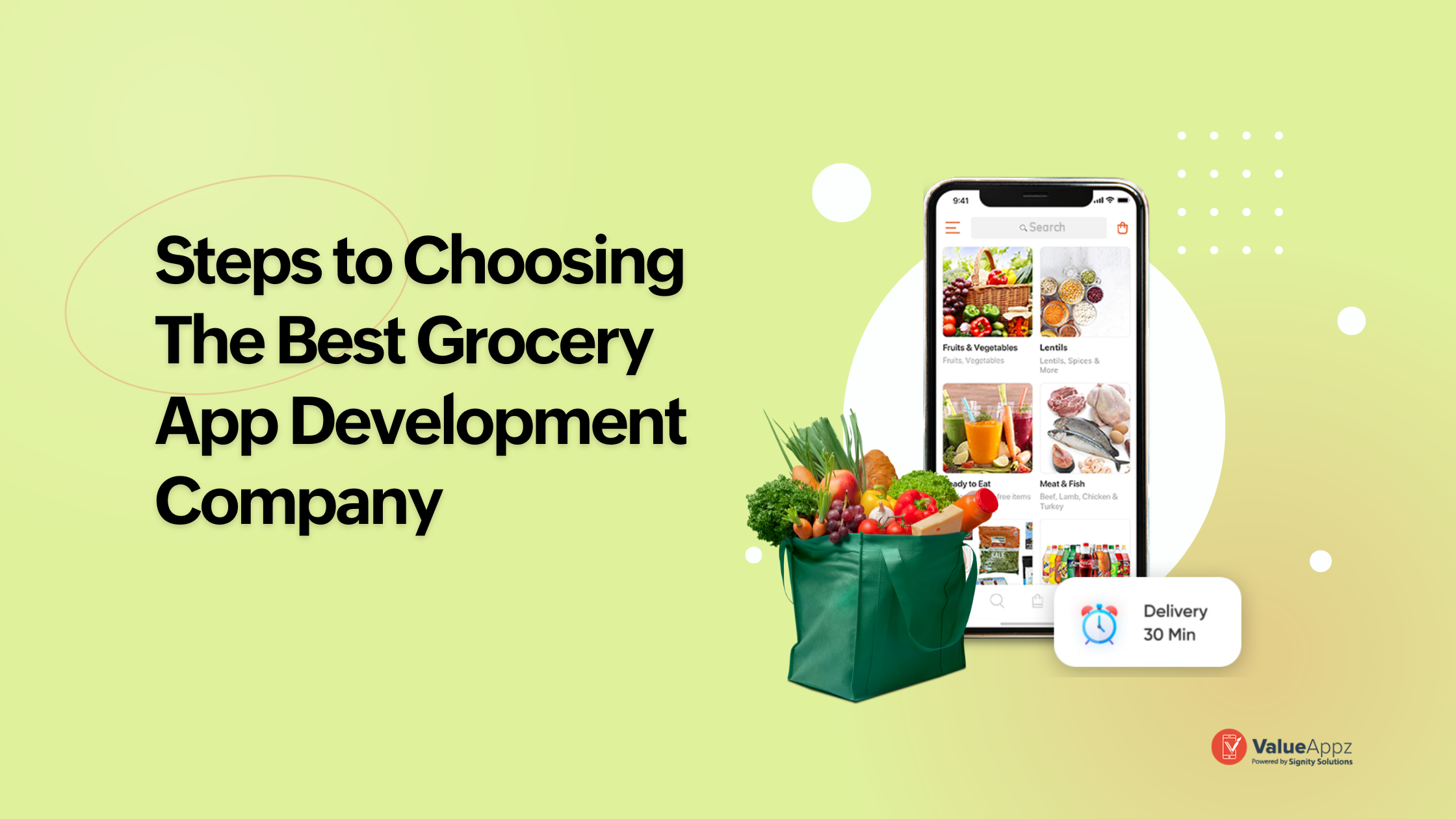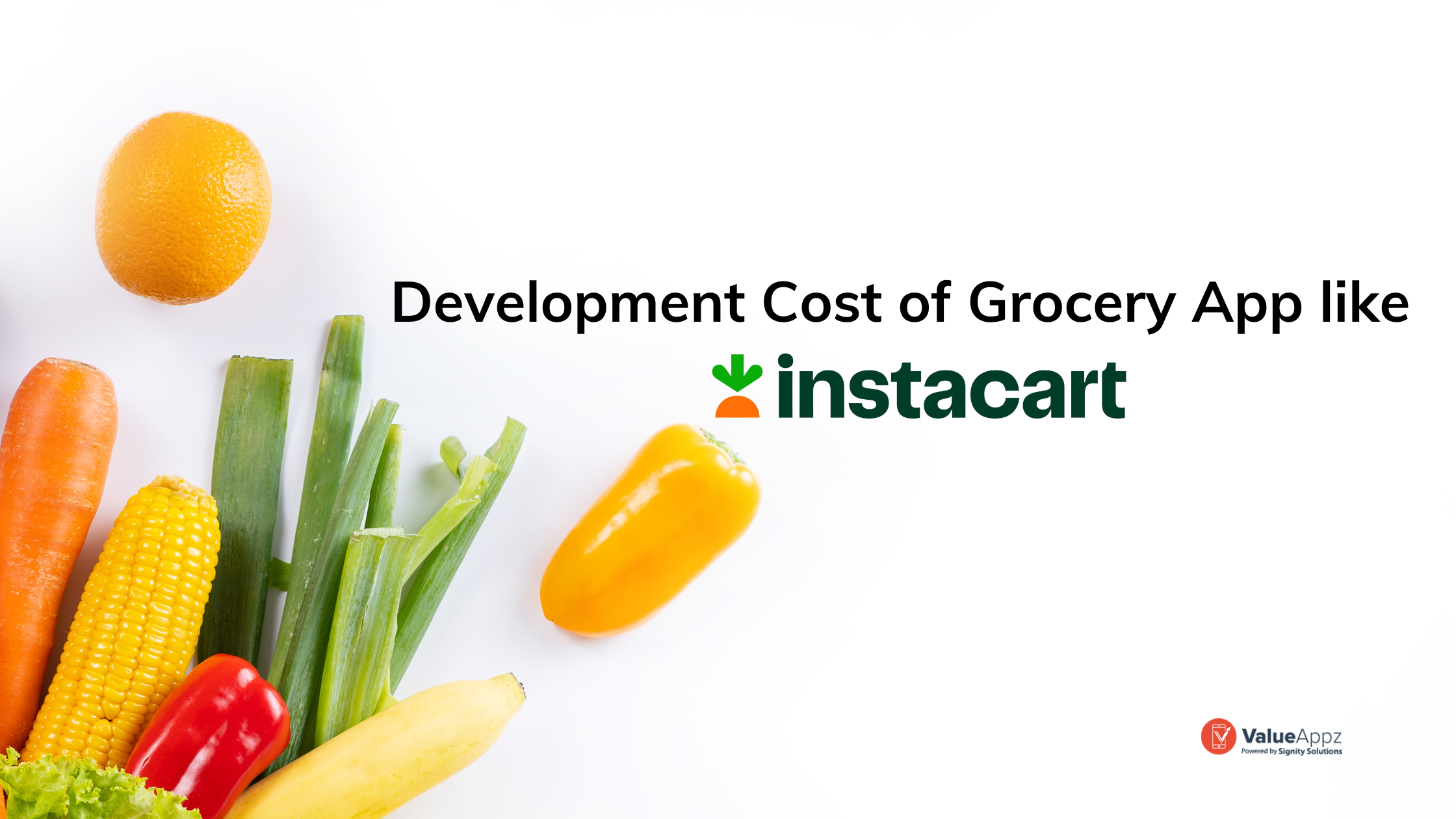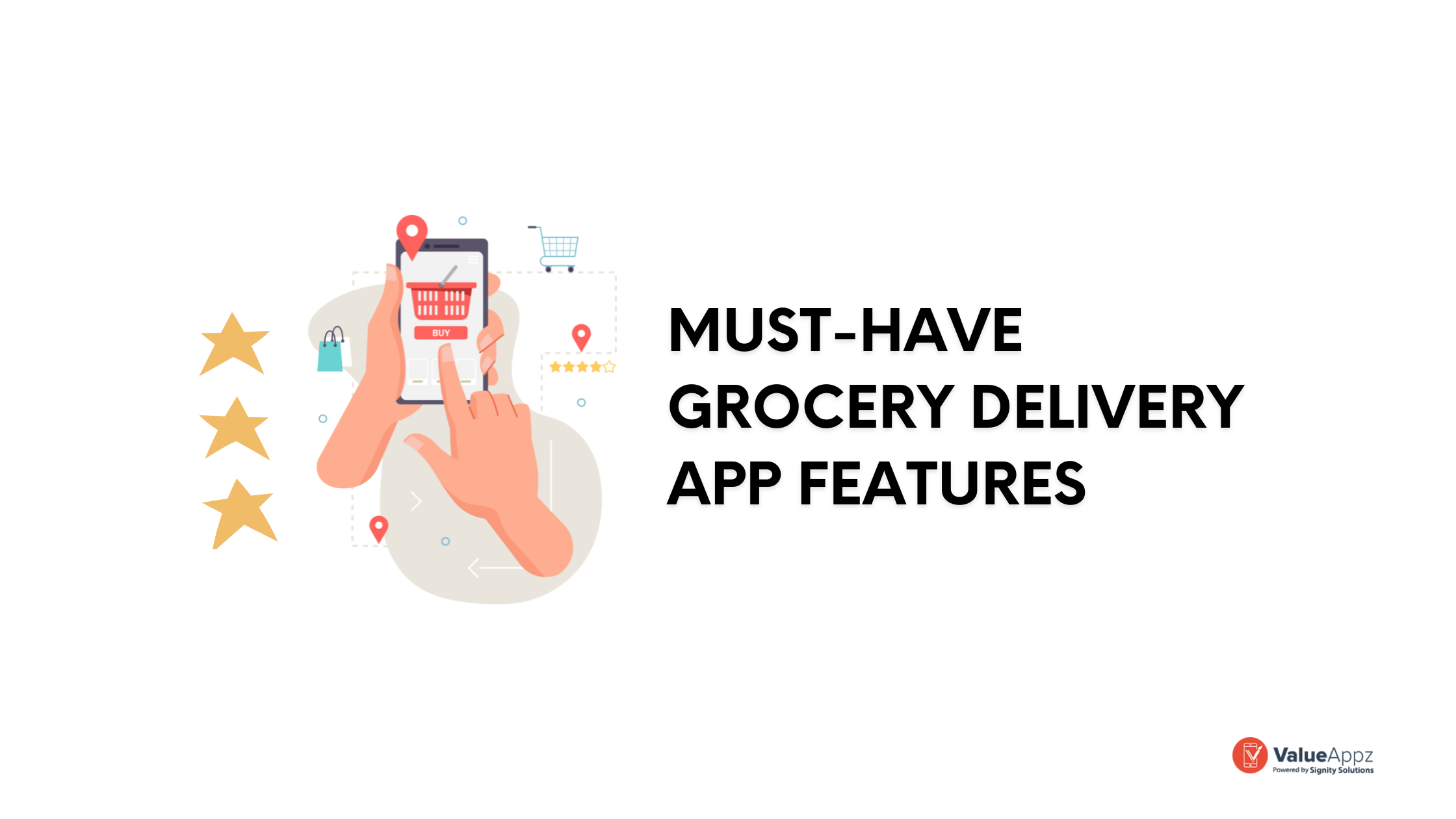How To Start An Online Grocery Delivery Business From Scratch In 2023?

Quick Summary: How to start an online grocery delivery business? Startups who want to invest in it are often unclear about the process. It includes research, planning, designing, and much more to ensure that you attract the right audience. This blog will help you understand the entire process of building an online grocery delivery business.
Do you own a grocery store? Or are you interested in starting a business in the grocery market? Whatever the situation, taking it online should be the first step towards planning.
The audience has quickly adapted to the idea of an online grocery delivery business, as it lets them order anything necessary when needed. Studies have shown that the number of users will rise to 174.60m by 2027. This rising demand for online grocery delivery businesses makes it the best time for startups to invest in it.
Entrepreneurs often have the question, “How do I set up an online grocery delivery service?” The blog will help you understand in detail the process of getting started with the online grocery business.
Before we get into the details of building a grocery delivery app, let us first explore where the market stands and are grocery delivery services profitable.
Key Takeaways
- Building an on-demand delivery app is crucial for establishing an online grocery delivery business.
- Complete market research is the first step towards investing in the online grocery delivery market.
- Defining the business model, choosing crucial features, and planning an engaging design are some crucial factors to consider.
- Considering the cost of grocery delivery app development is vital as it can vary based on various business needs.
Table of Contents
Online Grocery Delivery Business Market
What is the future of online grocery retail, and does it have a good scope for growth in the future? If studies are to be believed, the online grocery delivery service market is projected to grow to $2,159 billion in 2030. The market has gained valuable popularity in the last few years due to its convenience and ease of use. With people getting more busy in their daily lives, getting groceries delivered to the doorstep has become the best solution to meet the demands.
- Walmart app had downloads of about 1 million last month.
- As of 2022, total users on the Instacart app amounted to 13.7 million.
Are you interested in building an online grocery delivery business? Starting an online grocery delivery business needs a solid and reliable platform. With a grocery delivery app, you can ensure that you reach your target audience and attract customers online whenever they need to buy a thing. But how to build a grocery delivery business with an app? Here is a complete online grocery delivery business startup explained step-by-step.
Online Grocery Delivery Business Startup– 9 Steps To Build The App
Are you ready to take your grocery business online? Below are the 9 steps that can help you build your brand in the best way possible.
Step1: Do A Thorough Market Research
The first step to starting an online business is thorough research. You need to be aware of every detail, trend, and changing market demand to understand if you want to invest in the business. Therefore, knowing the online grocery delivery market should be the first step for your startup. Market research can be further categorized into three different areas:
Market size and growth:
Figuring out your area’s market size and growth scope is crucial to start an online grocery business. What country do you want to launch your delivery app in, and how does the audience adapt the idea? These are crucial points to be covered. As per the Statista reports, the grocery delivery industry is projected to reach a market value of US$ 1,140.00bn by 2027.
Competitor research:
Competitor research is instrumental in creating a grocery delivery app. It will help the entrepreneurs understand how exactly the delivery app model works, the best pricing model, and how the app should be designed to attract the target audience. It will further help make informed decisions that are user-centric, ensuring that the app brings the desired results.
Target audience:
The third point to consider is the target audience. Even though your app may belong to the same industry as that of competitors, your brand may have different visions and goals. Discover the audience’s pain points, current needs, demographics (age, location, income), shopping habits, and preferences.
💡 Discover how grocery delivery apps can benefit your startup: On-Demand Grocery Delivery App Benefits to Boost Business Growth.
Step2: Define The Business Model
As a startup, you can either launch a single-store app to present your grocery stores or build an aggregator model. Therefore, it is vital to identify the model before hiring a grocery delivery app development company.
The business model for entrepreneurs trying to build single-store apps is a digital platform for a particular grocery store. Customers can use the app to explore products, add products to the cart, and place orders for home delivery. Several sources of income are used to generate the money, including subscription services, commissions from sales, and delivery fees. The app can also provide features like tailored suggestions, loyalty programs, and alliances with nearby companies to increase client engagement and retention.
On the other hand, the business model for an aggregator app is based on teaming up with various supermarkets or food stores to offer clients a one-stop shop. Users can browse product catalogs from numerous retailers, compare prices, and order products for delivery. The connected stores are often charged a commission or fee for every order placed through the platform. Advertising, premium listings, and collaborations with delivery service providers are all potential additional revenue sources.
Building a website is equally essential for whatever business model you choose. With the help of it, you can gain high-quality leads and traffic, as well as present all the necessary information about your business, its products and services.
Step3: Choose The Monetization Model
Now that you know your target audience and what business model you will adapt, you must look into how the business will make money. Popular grocery delivery apps follow a combination of various monetization models to generate revenue. These include:
Delivery fees:
One of the most common app monetization models is the delivery fees. Customers are charged a fee for each order. Further, this fee is calculated based on factors like distance, order value, or delivery time. It can be used in both single-store apps and aggregator models.
Commission on sales:
This popular monetization model can be used by startups investing in an aggregator model with several grocery stores registered to the app. The stores pay a percentage of the order value as a commission for each order they receive through the app.
Subscription plans:
Offering subscription services can be an excellent strategy for generating recurring income. Customers can purchase monthly or yearly subscriptions that come with extras like free delivery, special discounts, or early access to particular services. This business approach guarantees a consistent flow of income while fostering consumer loyalty.
Advertising:
The app’s integration of advertisements will help generate income. Online grocery delivery apps can provide local companies or brands with advertising space to reach their user base. Ads may appear within the application, on delivery packing, or in customized notifications.
Partnership and promotion:
Additional monetization potential may arise from collaborating with other companies. For instance, the app may work with food and beverage companies to advertise their goods or provide special discounts. Such alliances may involve advertising costs or revenue sharing.
💡 Must read: 13 Best Grocery Delivery Apps in 2023.
Step4: Finalize The App Design
Once you are clear about the on-demand grocery delivery app, you need to create a roadmap for its design. It is one of the strongest factors to pull in the target audience. 90% of users have revealed that they stopped using an app because of its bad performance. The app design should be engaging yet simple and easy to use, so customers can navigate quickly.
For example, look at the Instacart app design. With minimal colors, this grocery delivery app is still eye-catching.
To ensure that your app is as beautiful as Instacart, here are the top three factors that you can consider while planning the UI/UX:
User experience:
The online grocery delivery business should be user-centric. Hence, the design should be planned to keep in mind that it provides a seamless experience to the users. From registering to ordering and receiving it at the doorsteps, each stage should provide a good experience.
Product catalog and inventory management:
The on-demand grocery delivery app is about quickly finding the right products. It should let the users browse various categories, search for a specific product, and provide a detailed description of each with good-quality images.
Personalization and recommendations:
About 88% of marketers invest in app personalization to enhance the user experience. It helps the customers believe that the brand cares about what they choose and how they interact with their app or website.
💡 Want to build an app like Instacart? Must check: How to Build an App Like Instacart?
Step5: Plan The App Features
How do you ensure that your online grocery delivery app provides all the necessary solutions? Well, choosing the right features is all you need. Let’s look at an example. The image below shows that Walmart- a popular grocery delivery app, lets its users add items to their favorites so that they can easily search for them whenever they want.
Adding such features not only solves the customers’ pain points but also helps build a strong relationship with them. Also, the features should be easy to navigate so that users can quickly complete the actions.
Here is the table explaining the must-have features of the grocery delivery app.
| Features | Customer | Vendor | Delivery | Admin |
| User registration | ✔ | ✔ | ✔ | ✔ |
| User login | ✔ | ✔ | ✔ | ✔ |
| Browse products | ✔ | ✔ | ✔ | |
| Search functionality | ✔ | ✔ | ✔ | |
| Product details | ✔ | ✔ | ✔ | |
| Add to cart | ✔ | ✔ | ||
| Place order | ✔ | ✔ | ||
| Delivery tracking | ✔ | ✔ | ✔ | |
| Delivery address | ✔ | ✔ | ✔ | |
| Payment integration | ✔ | ✔ | ||
| Order history | ✔ | ✔ | ✔ | ✔ |
| Ratings and reviews | ✔ | ✔ | ||
| Notifications | ✔ | ✔ | ✔ | ✔ |
| Account management | ✔ | ✔ | ✔ | ✔ |
| Product management | ✔ | ✔ | ||
| Inventory management | ✔ | ✔ | ||
| Delivery assignments | ✔ | ✔ | ||
| Customer support | ✔ | ✔ | ✔ | ✔ |
| Analytics and reports | ✔ |
💡 Also read: Grocery Delivery Apps: A Comprehensive Guide To The Top Features
Step6: Develop The Grocery Delivery App
Now that you have a roadmap and complete strategy, the sixth stage is to build the grocery delivery app. For this, you need an on-demand delivery app development team that has years of experience, skills, right resources and can align with your business goals and objectives. You may either build an app from scratch or go with clone app development.
Build a grocery delivery app from scratch:
The idea is unique and has its own design, features, and functionalities. The app is completely aligned with the startup goals and targets.
Clone app development:
If, as a startup, you do not have much idea about the online grocery business but want to launch in the market quickly, you can opt for clone app development. You may build an app like Instacart or Walmart with all the necessary customizations to present your brand. Further, it will save you time and money in app development.
Again, whatever app idea you may pick, choosing the right team is equally important.
Step7: Integrate With Third-Party Services
Building a grocery delivery app requires you to integrate with third-party services in order to improve its functionality and offer a seamless user experience. You can take advantage of their resources and skills by integrating with a variety of third-party services to optimize certain app features.
For example, integrating with payment gateways enables safe and practical online transactions while providing customers with various payment options. This integration ensures seamless and trouble-free checkout operations.
You may incorporate real-time position tracking, optimize delivery routes, and give clients precise arrival estimates by integrating with maps and GPS systems. As a result, delivery management is effective, and customer satisfaction is increased.
One example of third-party integration can be seen in the following image. The app lets its users track the order in real-time.
Step8: Test And Launch The App
Before you launch your grocery delivery startup in the market, testing the app and debugging it is vital. The app is tested for a number of factors, including usability, performance, security, and compatibility. To find and fix any problems or issues, a thorough testing method comprises running unit tests, integration tests, and end-to-end tests. It’s crucial to test user flows, simulate real-world circumstances, and ensure the app can be navigated easily.
Verifying the app’s compatibility with various hardware, software, and screen sizes is another aspect of testing. User acceptance testing (UAT) is crucial to gather feedback from a group of representative users who can test the app in real-world scenarios. Their feedback and insights can help identify usability issues or improvement areas.
A soft launch may be thought of to deploy the app to a smaller audience or a particular region. It enables additional testing, obtaining user feedback, and making required modifications before a wider release.
Step9: Update The App And Website Regularly
Once you have entered the market, your grocery delivery app and the website will require regular updates and changes based on the market trends and needs.
Regular updates involve adding new features, enhancing current functionality, and addressing any bugs or problems found through user testing or internal audits. You can give users a seamless and improved experience by keeping up with the most recent technological developments and sector best practices.
Updates may include more payment gateways, increase delivery possibilities, improve search efficiency, improve user interfaces, and add more security safeguards to protect user data, among other things. These changes enhance the user experience and help the app and website operate more effectively and flexibly.
Cost Of Grocery Delivery App Development
Considering the cost of an online grocery delivery business startup is a must. The average price can vary between $15,000-$60,000. It can further fluctuate depending on several factors, like the number of features, app complexity, and the development team. Hence, when choosing a grocery delivery app development company, considering the cost should be one of the priorities.
Build Your Online Grocery Delivery Business With ValueAppz
As discussed above, to start your online grocery delivery business, you need a solid app with all the features and solutions the target audience needs.
With ValueAppz, you can ensure quality and build a grocery delivery app within your budget. With our years of experience, we have helped several clients achieve their dreams and bought profitable results for them.
Whether you need a single-store app, an aggregator model, a grocery app from scratch, or build an app like Instacart and other popular models, we are a one-stop solution for your brand.
Get in touch with our professionals, and let us help you build your online grocery business.

Frequently Asked Questions
To set up an online grocery delivery service, do market research, choose a business model, identify the target audience, plan the app design, and build and test the app.
Yes, grocery delivery services are profitable. As per the reports, its demand is on the rise, and more customers will be registered to the grocery delivery apps due to its convenience and ease of ordering.
The users log in, search for products, and make the purchase by making online payments. The assigned delivery boy delivers the order to the set address.
The cost can vary between $15,000-$60,000. It can further depend upon factors like app features, complexity, design, and development team.
Different business models available for online grocery delivery businesses are single-store, aggregator, hybrid, and subscription models.
THE AUTHOR
Harjyot kaur
As a technical content writer my focus is on creating high-quality, engaging, and informative content that simplifies complex technical topics. Throughout my career, I have continuously pursued opportunities for growth and development, refining my skills and expanding my knowledge base.

Get ready to digitally transform your business.
Let our team help take your business to the next level. Contact us today to get started on finding the perfect solutions for your business needs.








